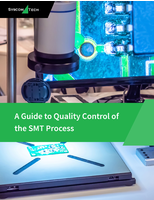Single Board Computer measures 2.8 x 1.9 in.
Press Release Summary:

Credit-card sized Spider Model P501 is based on IBM's 400 MHz 440GP, while Model P502 is based on IBM's 800 MHz PowerPC 440GX. Both come with 2 Ethernet ports, 256 kbytes of L2 cache, up to 256 Mbytes of DDR SDRAM, 16 Mbytes of boot/user flash, and 32 kbytes of user ID flash. Units provide 2 serial ports, real-time clock, and 32-bit Device-bus with DMA. Consuming only 4 W, Spider SBCs are hot swappable and self-booting for stand-alone operation.
Original Press Release:
General Micro Systems Announces Industry's Smallest Single-Board Computer
Credit-Card Sized SBC ideal for point-of-control distributing processing, scaleable telecom server blades, handheld devices, in-flight entertainment and defense/homeland security
Rancho Cucamonga, CA. March 9, 2004. General Micro Systems, a leading supplier of VMEbus and CompactPCI board-level products and systems, today announced the Spider, the world's smallest single-board computer (SBC). Occupying 30% less space than a credit card, and consuming as little as 4W of power, the Spider's tiny footprint, standalone operation, and hot swappability makes it ideal for a broad range of embedded applications, from distributed control systems and scaleable telecom blade servers, to handheld computing, in-flight entertainment, and defense/homeland security.
"The Spider is by far the industry's smallest standalone SBC and a true technology breakthrough," said Ben Sharfi, president of General Micro Systems. "Imagine a fully-functional SBC in a form factor slightly bigger than a Pentium Processor. The Spider is even self- booting, a virtual PC on a chip. The applications for Spider are practically unlimited, everything from distributed control and mobile devices, to ultra-modular telecom and mil-aero systems."
The Spider comes in two flavors: a low-power version (the P501) based on IBM's 400-MHz 440GP; and a high-performance version (the P502) based on IBM's 800-MHz PowerPC 440GX. Both modules come standard with two Ethernet ports (10/100 Base-TX for the P501; Gigabit Ethernet for the P502), which makes them easy to connect to other Spider modules, external packet switches, and other systems equipped with Ethernet ports. Both Spider modules come equipped with 256 kbytes of L2 cache, up to 256 Mbytes of DDR SDRAM, 16 Mbytes of boot/user flash, and 32 kbytes of user ID flash. They also provide two serial ports, an I2C port, a real-time clock (with field-replaceable battery), and a 32-bit Device-bus with DMA, which enables designers to add their own custom I/O without a PCI interface.
Spider measures just 2.8" x 1.9", smaller than a credit card. This miniature form factor boosts performance and simplifies cabling by enabling designers to locate autonomous decision-making much closer to the actual point of control, thereby making the Spider ideal for distributed control applications like factory automation, process control, engine control, and in-flight entertainment.
Spider's small size and hot swappability also make it ideal for building highly modular telecom server blades that provide unparalleled scalability and availability for use in call processing, signaling, and media gateways.
Spider's self-booting capability enables it to function as a standalone (bus-less) SBC, making it ideal for hand held as well as deeply embedded applications such as engine control and missile guidance. This standalone capability can also be used to enhance reliability in telecom and defense applications that require the processing of large numbers of independent channels (i.e., call processing or phase array radars). Because the Spider modules are equipped with their own processor, memory, real-time clock, and power source, they are relatively impervious to single points of failure that occur in traditional multi process blade servers. This "share nothing" approach makes Spider ideal for creating redundant, multi-channel, fault-tolerant, field replaceable systems that provide exceptional reliability and availability.
To enhance standalone operation, GMS offers a family of I/O modules that bolt directly to the Spider module in PC-104-like fashion. The LimI/O-1 module, for example, provides 15 digital I/O lines, three of which can drive high-current loads like large DC relays/lamps. The module also provides two RJ-45 ports for Fast or Gigabit Ethernet, one RJ-11 port (for RS-232), one RS485 serial port, an I2C port, and a memory socket for up to one Gbyte of additional mass storage. Other LimI/O modules under development include FPGA I/O, 802.11g wireless Ethernet and LVDS I/O.
Software support for Spider includes VxWorks-Tornado II and Linux. Both operating systems boot directly from the onboard Flash, eliminating the need for rotating media or network booting.
A spider module consumes just 300 mA at 3.3 VDC and 500 mA at 5-12 VDC and operates from -40C to +85C.
Spider starts at $300 for the P501 and $400 for the P502 in OEM quantity.
For more information on the P50x, please contact General Micro Systems, Inc. at 8358 Maple Place, Rancho Cucamonga, CA 91730. Phone: (909) 980-4863. Fax: (909) 987-4863. E-mail: sales@gms4sbc.com. World Wide Web site: www.gms4sbc.com.




